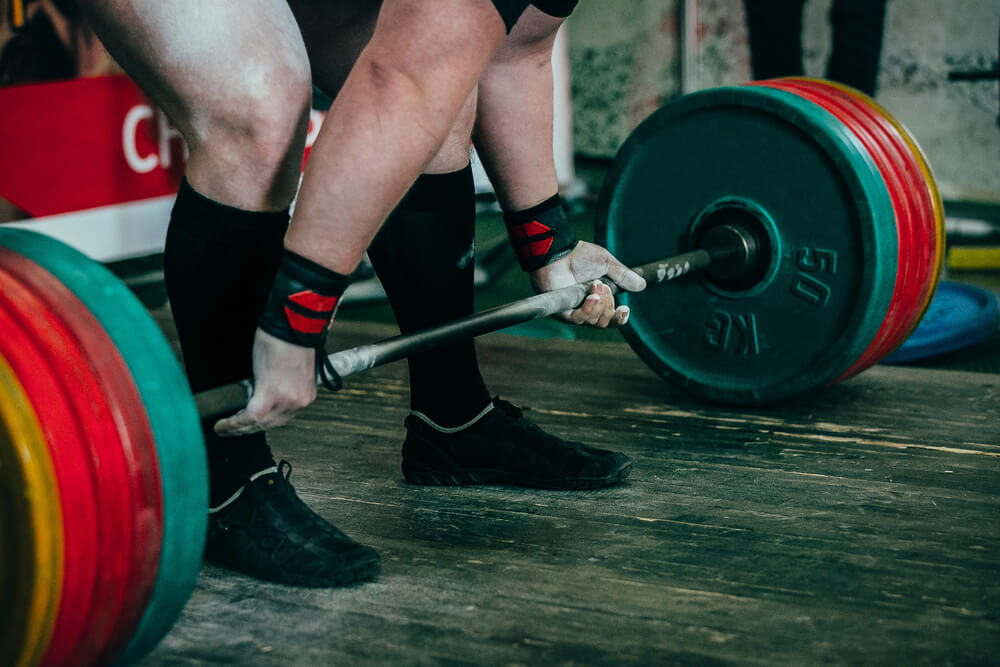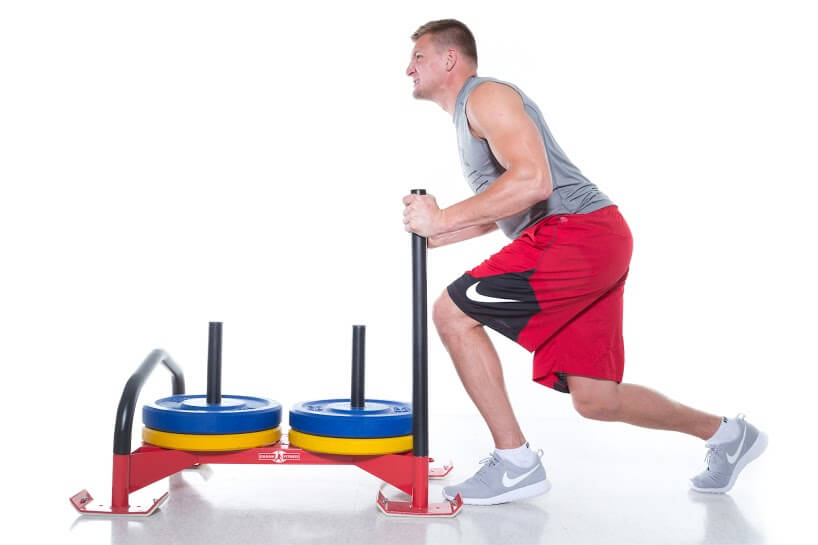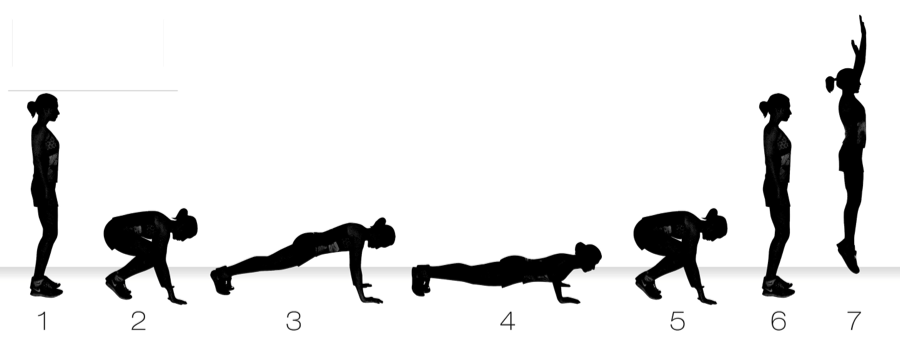Building your strength and size is why you hit the weights and go to the gym. However, this is only part of your workout regimen (at least it should only be part of it).
Beyond just growing stronger, you need to focus on your conditioning as well. Imagine an NFL running back that had to come out after every other play because they were out of breath and energy. Sure, they look great, but the lack of conditioning hinders their performance. Without your own conditioning, it drags down your own performance potential. That is exactly why you need to consider GPP for a strength and conditioning program.
Without your own conditioning, it drags down your own performance potential. That is exactly why you need to consider GPP for a strength and conditioning program.
But what is GPP and what can it do for you?
We’ve got all the answers to your questions right here.
Alright Already…
What is GPP?
Perhaps you’ve heard the abbreviation GPP tossed around in the gym. No, it is not some upgraded GPS system or any bit of technology. GPP is short for General Physical Preparedness.
What exactly does that mean?
Well, it kind of depends on who you ask.
See, different people will give you different definitions as to the overall meaning of general physical preparedness. Blindly asking the fellow lifters at the gym probably is not the best way to go, as they may give you a one-sided answer (or just not know at all). Legendary lifter Louie Simmons says GPP is “…a degree of fitness, which is an extension of absolute strength.”
This basically means you need to target your weaknesses and lift to improve not only your current strengths but your specific weaknesses.
By doing this, you’ll make your entire body stronger (or “absolute strength”).
This is a fine way to look at GPP as a weightlifter, but the problem here is it is not a complete definition.
Targeting your weaknesses is great, and it is what true professional body builders do. They will identify the weakest muscle in their body and do what they can to target it specifically. The problem though is it doesn’t necessarily condition the body. It strengthens it, but there is a reason GPP is known as “strength AND conditioning.” The two are not one in the same, so for ideal GPP, you need something a bit more.
Strengthening your weaknesses is an important part of GPP.
However, for the general athlete, you’ll need to perform a number of secondary moves in order to strengthen this weakness. For example, if you are a football player, the best way to improve upon yourself, your skill and technique is to directly practice on the field. Indirectly you’ll look to improve strength needed to improve what you do on the field.
So you’ll target certain areas of your body that need strength training that will help performance in the work you put in during competition. So while you need to put in the skill work on the field, you need to target those necessary areas within the weight room. This, in turn, becomes GPP as you are preparing your general physical fitness to boost performance.
Perhaps you’re not an NFL player or a professional weightlifter. In that case, it is best to marry the two ideas of GPP together. You want to target your strength weaknesses while also taking advantage of certain strength and conditioning moves that will help improve your life’s daily routine.
By taking the best of both worlds you’ll see a boost in performance while strengthening your entire body.
The Basics of General Physical Preparedness
Alright, so targeting weaknesses and performing secondary workout actions designed to improve your primary movements during everyday life and athletic activities can seem to be a rather general answer to GPP.
It may also not really clear exactly what you’re supposed to do. However, it all boils down to improving your endurance, strength, speed, flexibility and overall skill level for what you’re looking to become better at (such as becoming a better basketball or rugby player).
Due to this, the exact workouts you’ll perform during a GPP workout will vary and is more tailored specifically to your individual needs.
This is also what makes it beneficial as you won’t just show up at the gym like a trained drone and perform the exact same lifts and moves as the guy next to you. Its tailored to your unique needs.
GPP should serve as the foundation of your training. It becomes the basis of your future training and, depending on what you’re training for, will usher you into another phase known as Specific Physical Preparation (SPP). SPP is where you work a very specific movement in order to train your body to become accustomed to performing the move.
The best example is shooting free throws. Great free throw shooters do not aim and shoot. It is muscle memory.
The body and brain know the weight of the ball and the distance to the hoop, so by repetitive practice, the body becomes accustomed to exactly how it needs to perform in order to make the basket (in other words, Shaq didn’t really follow through with his SPP training).
So GPP lays the ground work and SPP caps it off. If you’re training for specific athletic activities you’ll eventually get into SPP, but that is for a different article.
Creative Conditioning and CrossFit
GPP is another way of saying creative conditioning.
Some of the best ways to target and strengthen both the weakest muscles and the muscles you need to boost performance is to really get creative with your workouts.
After all, if you were hitting the weaker spots of your body already during a workout you wouldn’t need to target them. This is what requires you to dig a bit deeper into the workout tool box and break out some more unique moves.
This is where CrossFit comes in. Most people fall into one of two categories regarding this workout trend. For some, it is the greatest thing ever. They get to push giant tires while moving over to a jungle gym.
It’s like a playground for adults!
Of course, people who fall into this camp are usually the ones who will constantly tell you about CrossFit and that they did CrossFit earlier in the day and how you should be doing CrossFit too.
The second group of people are essentially turned off by CrossFit…although this is primarily because of the people who won’t shut up about it and not because they’ve tried it and just don’t like it.
Here’s the thing about CrossFit.
While it might not offer all of the weight lifting you enjoy and want to keep in your workout routine (there is just no replacing working with free weights you can easily increase and decrease in size), one of the major benefits of CrossFit is creative conditioning.
With it, you’ll be able to target certain areas of the body you’ve never hit before, which is what will help you perform GPP.
What GPP Targets For Everyone
The exact moves you will perform to fully take advantage of GPP is different from the person you talked into carrying out GPP with you.
However, there are real world application workouts that train your core differently.
This is done in GPP.
Cardiovascular training and conditioning become part of it, as it allows you to harness the three different kinds of energy storage systems your body uses (the initial burst, the medium performance, and the endurance, long term energy). All of this will help improve total body strength while also targeting your heart health.
Heart health is improved with GPP because of the cardiovascular elements and how your heart needs to pump more oxygen and blood throughout the entire body.
GPP Workout Examples
With your GPP needs being different from someone else’s, there is not one specific GPP workout for you to follow. This is where you need to identify your own weaknesses and then look to different moves to help target these areas. So we’ll provide you with a handful of different workout options you can pick from.
You can also sign up for a CrossFit gym class nearby.
However, when talking with the staff, tell them you’re interested in GPP and then point out what you are interested in improving. If they just hand you a general workout routine, it’s time to back up and leave. This is because they don’t know (at least the people you’re talking with) how to target your given area and they are just providing you with the general information and workouts they give everyone.
The problem with this is you may not hit your weak area at all.
Sure, you’ll get in shape, but the entire purpose of GPP is to improve your weakness in order to boost overall performance. On the other side of the spectrum, if they’re able to work with you and tailor the CrossFit workout routine to exactly what you’re looking for, you’ve found the right gym (T Nation, 2004).
The Burpee-Push-up-Pull-up
This one is really going to fire up your core and work every muscle in your upper body.
You’ll need a pull-up bar for this. Start standing directly under the pull-up bar. Drop down into the initial crouch of the burpee, then shoot your legs back and complete your pushup. From here, bring your legs back up to your feet into your jumping motion. Now, jump up to the pull-up bar and perform a pull-up. Return to the beginning and repeat.
Instead of focusing on a performance number, shoot for a time. Do this exercise for 180 seconds, wait for two minutes, then do it for two minutes, rest two more minutes, then do it for 90 seconds. Continue this pattern until you’re down to only 30 seconds performing the move.
If you want, you can at in a mountain climber into your Burpee either pre or post push up for some added core movements.
Sit-up-Squat-Lunge
This is another great combination move for the core and lower body. Begin in a traditional sit-up position. Perform a sit-up, but instead of going back down, jump up to your feet and hold yourself in a lowered squat position. Now, jump as high as you can into the air from here, reaching up to the sky and land in a squat position. Lower yourself back down into a sit-up and repeat.
The duration for this is much like the previous workout. Perform straight for 180 seconds, rest for two minutes, perform for two minutes, rest for two, perform for 90, rest for two minutes and so on down to 30-second performance intervals.
Bodyweight Lunge
This is a nice off-day GPP move. Stand with your feet shoulder width apart and your hands clasped behind your head. Lunge forward with one leg, hold, then repeat with the other. Perform the workout for two minutes, rest for two, then repeat.
If this (or one of the other) workout(s) becomes too easy, begin decreasing the amount of rest time in between sets. You should be completely tapped out of energy by the end of each set.
When Should I Perform GPP?
The best time to begin up a GPP routine is during your offseason. This way, you can focus on strengthening the rarely used parts of your body, so by the time the season comes around your body is fully engaged and ready to go. If you don’t have an “off season,” consider a GPP workout during your non-weight lifting days. Or, perform the upper body GPP movements on your leg day, and your leg GPP movements on your upper body day.
Conclusion
The beauty of GPP is it really can be for everyone.
After all, we all have our weaknesses that need to be strengthened. GPP is one of the best ways to lay an improvement foundation and it is why you need to look into adding a GPP routine into your weekly workout regimen.
What you target though is up to you, as only you truly know what the weakest parts of your body are.
-Terry Asher
Terry Asher
Latest posts by Terry Asher (see all)
- Better Family – Product Review Liquid Daily 2 oz - Dec 16, 2024
- Post-Workout Recovery: The Key to Optimal Performance - Nov 25, 2024
- Pre-Workout Supplements – Everything You Need To Know - Nov 18, 2024














If you are a beginner to any workout then, the first preference is always the own weight exercise. You can include stretching and own weight exercises in this. Also, you can add the cycling, running and split squats could be added into this. After practicing this for one month, you can easily proceed to advanced workouts.
Workout with heavyweights is the advanced version of exercise but preparing the body for those advanced workouts is the basic thing. It should be done in the starting only. And for this, proper nutrition and supplements are very necessary. All you need to do is pick the best for your body. So, always choose the best for your body as this is the only place you live in.
[…] If building muscle strength is your primary motivation for lifting weights and working out, you’ll need to shift up your workout plan accordingly. […]
[…] pay big bucks for trainers. These trainers are paid off of their success, which usually means improved strength and reduced injuries. Basically, they are paid for their philosophy. If a trainer is unable to […]